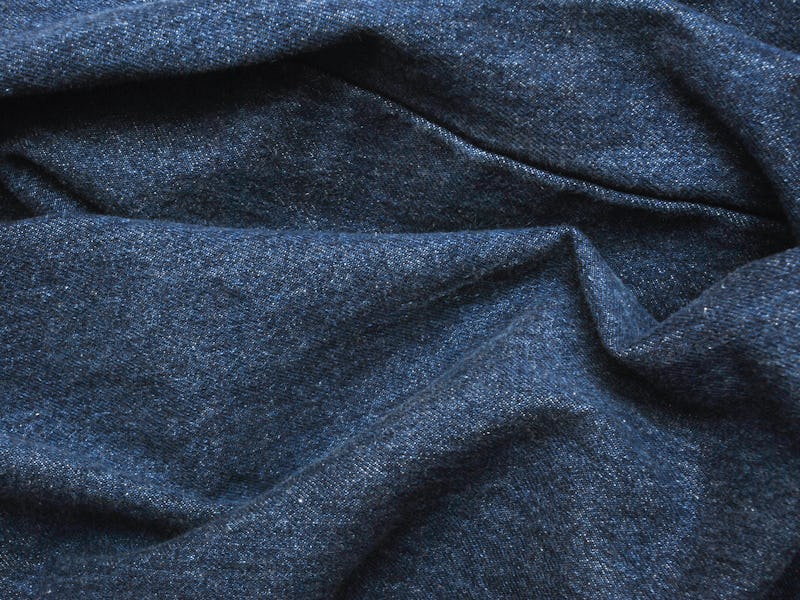H&M-backed technology will create fast fashion from clothing slurry
It's a process called circulose.

Fashion trends used to change once a season, but the pace of fast fashion — defined as cheaply made clothing to monetize of-the-moment cultural sentiment — has made that change constant.
This overload of new, cheap clothing has created a consumption problem that leads to more barely worn clothes ending up in landfills, but a new product could change that.
The creators a technological process called circulose say it is poised to break this vicious cycle, even if the types of fabric on which this reusing tech can be applied is limited. The Swedish company called re:newcell has trademarked this process, which is designed to reuse clothing materials indefinitely.
The company announced last week it would partner with Swedish compatriots H&M, the popular clothing chain that is perhaps one of the biggest purveyors of fast fashion, and a clothing line made from the technological process is slated to debut in March.
Here's how the tech works: the company's Swedish manufacturing plant, it receives worn-out or unwanted clothing made of natural materials like cotton and viscose (wood pulp) and remove any zippers and buttons.The clothing is then shredded, and the natural materials and separated from other components of the garment, like plastics or dyes, through a chemical dissolving process. The resultant clothing slurry is then dried and rolled out into sheets of Circulose that can be shipped to clothing companies to be used as natural fibers.
According to the UN and the Ellen MacArthur Foundation, the manufacturing and sale of fast-fashion clothing accounts for 10 percent of the world's carbon emissions, as well as the use of 93 billion cubic meters of water and the creation of 20 percent of the world's polluted water through dyes and treatment. While companies benefitting from these practices have attempted to enact environmentally friendly policies in the past, the clothes recycled as part of those initiatives either ended up in landfills or as housing insulation.
Old and worn out clothing waits to be transformed into Circulose at re:newcell's Sweden plant.
When it comes to what exactly is dissolving these fibers though, Harald Cavalli-Björkman, the company's chief marketing officer, tells Inverse that the exact chemical makeup is a trade secret.
"The specific chemicals used in our process is one such trade secret. [But these] chemicals have been specifically chosen for their eco-friendliness," says Cavalli-Björkman." They are either recovered and reused or reacted (i.e. neutralized) as part of the process and do not follow the product out, neither as pulp nor as fiber. We use them to adjust three important properties of the cellulose – the brightness (de-dyeing), the viscosity (degree of polymerization) and the reactivity. These chemicals are commonly used in the conventional industrial pulp and paper industry in Sweden and elsewhere. Rather than the chemicals applied, our innovation is the recipe, the sequence of steps, in which we apply them to adjust the properties of the cellulose."
Cavalli-Björkman says they're more concerned about the chemicals coming out of the clothes than going on them, and that they're careful to protect the water used in their processing from chemical contaminants. A breach could result in the company being shut down by the Swedish Environmental Protection Agency, says Cavalli-Björkman.
H&M, an early investor in re:newcell, is planning to launch its first piece of clothing made from Circulose in its new "Conscious Exclusive" line this spring in efforts to meet its goals to be 100 percent recycled or sustainably sourced by 2030. The dress, made of 50 percent recycled jeans and 50 percent wood pulp, will set shoppers back $149. A steep price increase from the store's typical $20, $30, $50 items.
While this process sounds like a promising way to improve an industry's spotty record of resource management, it's far from an all-inclusive solution.
The company's website emphasizes that this process is meant to be used on natural fibers like cotton and viscose and that mixed fabrics (say 50 percent cotton and 50 percent spandex) would not be ideal, due to their unnatural components. However, synthetic fabrics are a mainstay of fast fashion and its difficult to find a garment that doesn't contain some percentage of polyester, spandex or rayon.